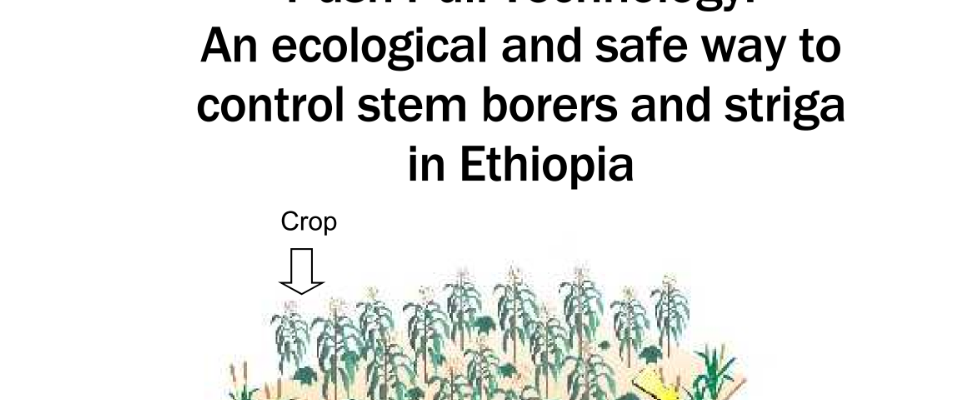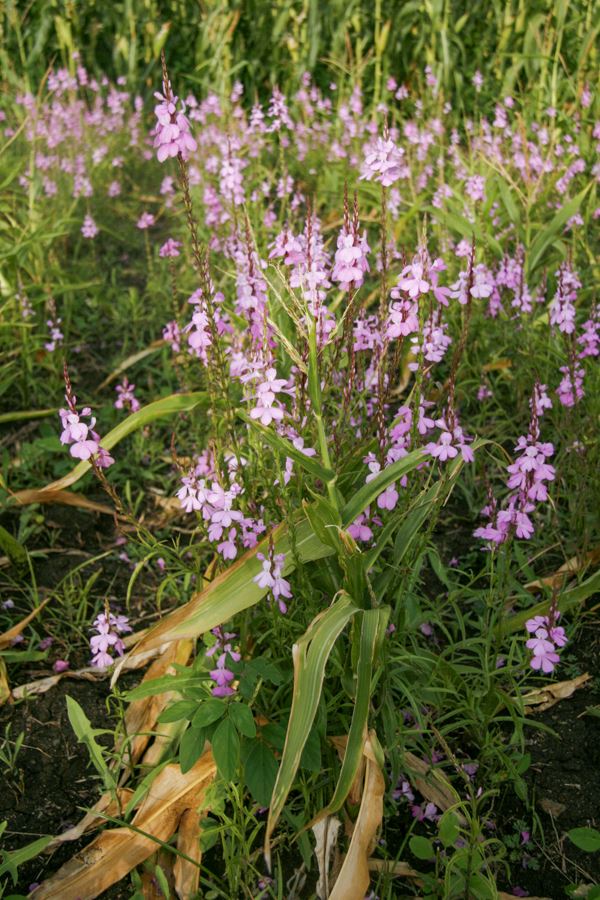Ethiopia’s economic development is based on agriculture. Accordingly, many efforts have been made to increase yield to eliminate poverty and provide food security for the estimated 90 million people living in Ethiopia in 2014, over 80% of whom are rural. Maize and sorghum are the 2nd and 4th most widely grown cereal crops in the country. However, the optimum yield cannot be obtained from these crops due to their vulnerability to pests, diseases and weeds, although they give better yield in comparison with the other crops. The areas where they are grown also suffer from low soil fertility, shortage of rainfall, and the impacts of weather variability caused by climate change that also reduce yields. Most of the damage to maize and sorghum is caused by stem borer pests and the parasitic Striga weed, both of which have been causing major crop losses in recent years. These problems occur mostly in the middle and lower altitude areas of the country, i.e. below 1900 m above sea level (asl). These problems are familiar to the farmers in Ethiopia but they have not been able to overcome them. A new practice, Push-Pull Technology, has been found to be an appropriate crop management system to minimize both stem borer and striga infestations. Using Push-Pull Technology results in female stem borer moths being pushed out of the crop by particular ‘smells’ given off from Desmodium, a legume, grown between the crop rows. ‘Smells’ from a border of Napier/ Elephant or Mulatto/Brachiaria grass pull the moths out of the field to lay their eggs there. However, the young caterpillars get mechanically trapped by the sticky sap produced by the Elephant grass, also called Napier grass, and die. At the same time, chemicals from the roots of the Desmodium cause Striga seeds to germinate and then die in the soil before they can attach themselves to the roots of the crop. This technology does not use any toxic chemicals: it only needs farmers’ willingness to undergo training and plant the legume and grass in their fields of maize and sorghum. Once in use, farmers claim that the technology increases the yield from their fields by around 50 and even up to 90 percent.
Authors: ISD team
Contact address: sustaindeveth@gmail.com
Institution: Institute for Sustainable Development (ISD)
Twitter name of the institution: @isd_bio
Twitter link: https://x.com/isd_bio
Available downloads:
Push-Pull Technology: An ecological and safe way to control stem borers and striga in Ethiopia


